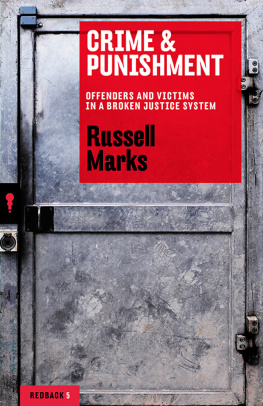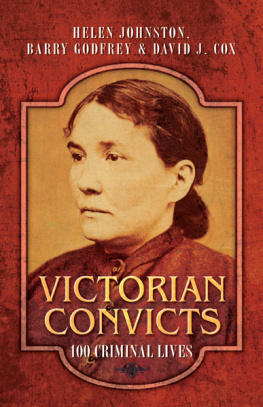First published in 1933
by George Routledge & Sons, Ltd
This edition first published in 2016 by Routledge
2 Park Square, Milton Park, Abingdon, Oxon, OX14 4RN
and by Routledge
711 Third Avenue, New York, NY 10017
Routledge is an imprint of the Taylor & Francis Group, an informa business
1933 George Routledge & Sons, Ltd
All rights reserved. No part of this book may be reprinted or reproduced or utilised in any form or by any electronic, mechanical, or other means, now known or hereafter invented, including photocopying and recording, or in any information storage or retrieval system, without permission in writing from the publishers.
Publishers Note
The publisher has gone to great lengths to ensure the quality of this reprint but points out that some imperfections in the original copies may be apparent.
Disclaimer
The publisher has made every effort to trace copyright holders and welcomes correspondence from those they have been unable to contact.
A Library of Congress record exists under LC control number: 33011979
ISBN 13: 978-1-138-99984-8 (hbk)
ISBN 13: 978-1-315-65802-5 (ebk)
TO BARROW AND GERALDINE S. CADBURY
Several recent events have combined to focus public attention upon the problem of crime and its treatment. The riot at Dartmoor Prison in January, 1932, though less serious than it might have been, was serious enough to show that all was not well with our prisons. The Criminal Statistics for 1930, published last April, revealed a serious increase in certain types of crime, and there is every reason for believing that when the figures for 1931 and 1932 are published they will show further increases. To these facts must be added the growing sensationalism of the popular Press, in which a criminal is now a gangster, a shopbreaker a smash and grab raider and a robber a motor bandit, which has created in the public mind an impression that present-day crime is worse than it is and has assumed alarming proportions.
It is common knowledge that the last twenty-five years have seen considerable changes in the treatment of crime. Fewer persons have been sent to prison than formerly, sentences have been shorter, and prison conditions less degrading. Many offenders who formerly would have been sent to prison are now released with supervision under the Probation Act, and, for young offenders, probation and Borstal are fast superseding prison as a penal method.
The superficial observer has not unnaturally seen an apparent correlation between these changes in our penal methods on the one hand and the reported increase in crime on the other, and even some of those who have welcomed the reforms of the past few years are beginning to ask whether reform has not gone too far. Prison reform, the probation system, and the shorter sentence have all been accorded their share of blame, and the view has been widely expressed that, in our zeal for reform, our treatment of crime has lost its deterrent effect and that a return to the greater severity of former days has become an urgent necessity. Already the Courts, always sensitive to changes in public sentiment, have begun to reverse the engines, to send more people to prison and to pass longer sentences. Our prisons which had begun to empty are becoming full again. Our closed prisons are being opened.
But before our modern penal methods can be saddled with responsibility for this state of affairs, some investigation not only into the causes of modern crime and the effectiveness of our present methods, but also into the facts of the actual situation is desirable. The growing irresponsibility of the Press, the increasing attention paid to dogmatic opinions expressed by men and women with a deserved reputation in one field of knowledge upon matters outside their experience, and the inaccurate statements of others who ought to know better, have all combined to create an erroneous idea of the facts. In the absence of accurate information the country is in serious danger of being stampeded into measures which will only aggravate the evils which they are designed to remedy.
In recent months alarmist stories have frequently appeared in the popular newspapers of motorists having been held up by motor bandits. As a result many people have hesitated to give assistance to motorists on the road or to make journeys at night. Yet on 18th November, 1932, the Automobile Association announced that
not a single case of motor banditry has been reported by patrols of the A.A. although these men are daily covering practically every road of any importance in the British Isles. The A.A. with its membership of nearly half a million has no record of a complaint from any one of its members.
Sir Henry Dickens, K.C., on retiring from his position as Common Sergeant, recently contributed a long article to The Times in which he said that
The state of crime in this country is most alarming first because its principal characteristic is violence,
and a bishop, presiding at a meeting of a Discharged Prisoners Aid Society, stated that recent statistics showed a considerable increase, particularly in crimes of violence.
The average newspaper reader not unnaturally assumes from such statements, that there has been an enormous increase in murderous assaults, whereas in fact violent crimes against the person such as murder, attempted murder, robbery with violence, wounding and the like, are not more numerous than before the war, and in the case of most such offences are considerably less so. The principal increase in crime in recent years has been in house breaking and shopbreaking, which, because violence may be used in breaking in, are officially classified as crimes against property with violence . That this increase is a serious matter which demands earnest attention is not questioned. But the creation of a general impression that an increase in house breaking is an increase in violent assaults is only to confuse the issue.
Moreover, some understanding of the present-day incidence of crime and of the relative success or failure of our modern methods compared with those they have superseded is important to an understanding of the problem. Thus it is not without significance that the principal increase in crimes against property has been in the North, where the industrial depression is greatest, and in the densely populated urban districts outside large cities. It remains to be seen whether the recent increase in crime is due to changes in our methods or to new social factors which may have adversely affected the situation. The more severe penal methods of the past were abandoned not out of sentiment, but chiefly because they had proved ineffective. Again, the Dartmoor outbreak occurred in the one prison in the country which, owing to its isolated situation, had been largely outside the scope of recent reforms. Far from being a failure, some of the modern experiments in the treatment of crime have proved in the event surprisingly successful. These and other matters must claim our attention. Besides, if, on the whole, our new penal methods are more successful than the old, that is no reason to infer that these methods leave nothing to be desired, or that they are as successful as they should be. There is urgent need for further study and constructive thought in regard to the whole treatment of crime, which in many ways remains illogical, ineffective and unscientific.




